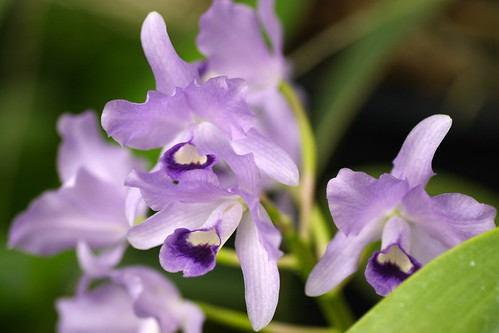
This species is also know as Bowring's Cattleya and was named after an English orchid grower who lived in the late 1800s.
It is native to Belize and Guatemala. Cattleya bowringiana prefers to grow on exposed rocks near free-flowing streams. They can be found near cliffs between 200 and 900 meters. Atmospheric humidity is high at all times. It may grow as a lithophyte in rocky ravines, with the plants splayed out on rocks with little shade. Interestingly, Cattleya bowringiana has occasionally been found growing as a terrestrial on quartz sand along rapidly flowing streams in addition to its more traditional habitat of large tropical trees.
Cattleya bowringiana has bold, club-shaped pseudobulbs, that can reach 10 to 15 inches in height, and are topped with two (sometimes three) leaves. The leaves are thick and leathery. Well-grown plants can reach 20 to 30 inches and produce up to 25 flowers per flower spike. Flowers are 3 inches (7.5 cm). The flower spike emerges from short-lived spates and grows to 10 inches (25 cm) before the flowers open. Flowers grow in clusters from a few (5 to 10) to a maximum of 15 to 25. Blooms in the fall and winter.
Grow in cool or warm Cattleya growing conditions. Cattleya bowringiana is easy to grow. As one reviewer put it, "There is no special treatment for these plants; they just grow". The plant sends out new growths in late May or June that will mature by late summer and will flower without a rest period in late September and October (in the United States). Provide lots of water when actively growing.
No comments:
Post a Comment